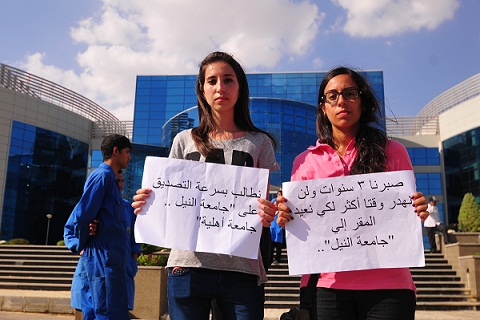US President Donald Trump has begun his regional visit on May 13, which, at the time of writing, includes Saudi Arabia, Qatar, and the United Arab Emirates. Meanwhile, Israel harbours limited hopes of being added to the itinerary. In effect, the visit constitutes a significant diplomatic and economic event, with a primary focus on major investments between the two sides, security issues, and efforts aimed at restoring calm and stability in the region following the events of October 7, 2023.
The visit comes amid complex geopolitical circumstances marked by escalating regional tensions—particularly the ongoing conflict in Gaza and strained relations with Iran—alongside global economic challenges tied to energy markets and trade. Trump is expected to hold a summit with the leaders of the Gulf Cooperation Council (GCC) in Riyadh, underscoring the political and economic character of the visit and reflecting his administration’s priority to strengthen partnerships with Gulf nations.
Politically, one of the prominent objectives is to attempt an expansion of the Abraham Accords, aimed at normalizing relations between Israel and Arab states, with the potential inclusion of Saudi Arabia as a new signatory. However, the repercussions of the Gaza crisis remain a significant obstacle to this expansion—particularly due to the ongoing conflict in Gaza and Saudi Arabia’s insistence on a two-state solution, a stance at odds with the current Israeli government’s position. The visit is also expected to address the Iranian issue, with Trump likely to revive his “maximum pressure” strategy to enforce his vision of a nuclear-free Iran.
The lead-up to this important visit has witnessed a series of controversial developments, some of which may negatively impact its anticipated outcomes—notably, Trump’s singular metric for success: the volume of financial and economic gains achieved. Among the most contentious of these is the “Gideon Carts” plan, which seeks to forcibly displace Gaza’s population toward Egypt’s borders—a move that threatens to exacerbate tensions with Cairo and raises concerns over a potential reoccupation of the Gaza Strip. Additionally, Israel has resurfaced its longstanding “David’s Passage” project, intended to link Israel to the Euphrates River, encircle Iraq’s borders, and provide Israel with a land route to break its isolation and connect to the Western world.

On the other hand, there have been some positive developments, including the announcement by the Houthi movement to halt attacks on US ships in the Red Sea following mediation by the Sultanate of Oman. Oman is concurrently hosting sensitive negotiations between Washington and Tehran—the Houthis’ principal backer in Yemen—over Iran’s controversial nuclear program. Oman seeks to secure the success of the visit by leveraging its strong ties with Tehran, aiming to prove its capacity as a serious mediator and possibly an alternative to other regional players whose credibility has faltered amidst ongoing crises.
It is noteworthy that while Israel launched powerful airstrikes targeting, for the first time, Sana’a International Airport, Trump simultaneously declared an immediate halt to attacks against the Houthis—seemingly sending a message to regional leaders that his vision for the region is not entirely aligned with Tel Aviv’s. This divergence became starkly apparent when, during a joint appearance with Benjamin Netanyahu at the White House, Trump announced the resumption of negotiations with Iran, visibly unsettling Netanyahu and exposing underlying differences.
In a related context, and in preparation for the visit’s success, negotiations between mediators and Hamas have regained momentum, seeking to compel the group to release all hostages and withdraw from Gaza’s military scene. As part of this pressure campaign, the US administration has recently worked to shift the positions of Turkey and Qatar, urging them to reduce their support for what it classifies as a terrorist organization.
Continuing Trump’s pattern of symbolic geopolitical moves—as seen in his renaming of the Gulf of Mexico to the “American Gulf”—he also intends to rename the Persian Gulf, as listed on United Nations maps, to the “Arabian Gulf,” a long-standing demand dear to the Arab Gulf states.
The visit further carries an ambitious economic agenda aimed at deepening trade and investment partnerships. It is expected to witness the announcement of a $3.5bn arms deal with Saudi Arabia, including medium-range air-to-air missiles and supporting equipment, as part of broader military cooperation. The United Arab Emirates has committed to a ten-year, $1.4trn investment framework in the United States, while Saudi Arabia is pursuing major investments possibly reaching $1trn in the defence, infrastructure, and energy sectors. Additionally, Trump’s business ventures have announced new projects in the UAE and Qatar, signalling an expansion of economic cooperation into sectors beyond oil and weaponry. Notably, these agreements are expected to generate substantial employment opportunities in the United States, with President Trump stating that these investments would “create tremendous jobs within two or three days.”
In any case, having barely surpassed his first 100 days in office without achieving notable successes on the foreign policy front—particularly with stalled peace talks in Ukraine, which he had promised to resolve within 24 hours of taking office—Trump pins considerable hopes on this visit. He views it as a potential breakthrough both politically, by seeking to end the Gaza conflict and secure a binding agreement on Iran’s nuclear file that satisfies Arab and Israeli demands, and economically, amid an escalating trade war with China, which relies on more than 80% of Gulf oil exports.
Forecasts suggest that the visit will bolster political coordination between the United States and Gulf states and may serve as a pivotal platform for confronting global and regional challenges, including ongoing conflicts and strategic rivalries with other international powers. It would thus be unsurprising if a significant deal of some kind is announced during the visit—one that secures further agreements with Gulf states, even if only superficially aligned with, and in practice diverging from, the aspirations of his Israeli ally, Netanyahu.
Dr. Hatem Sadek – Professor at Helwan University





